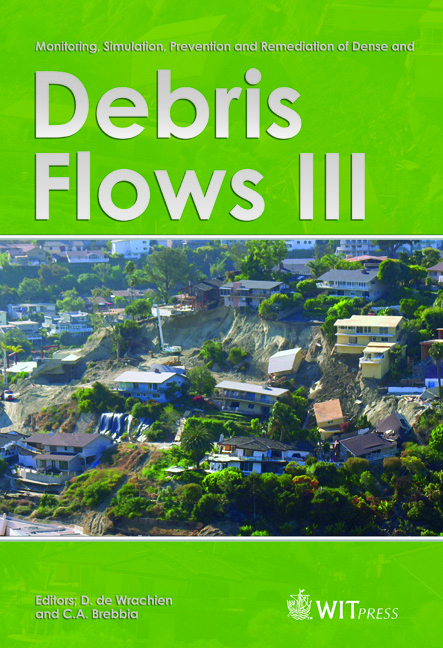Erosion And Sediment Transport Modelling In Northern Puglia Watersheds
Price
Free (open access)
Transaction
Volume
67
Pages
14
Page Range
199 - 212
Published
2010
Size
789 kb
Paper DOI
10.2495/DEB100171
Copyright
WIT Press
Author(s)
F. Gentile, T. Bisantino & G. Trisorio Liuzzi
Abstract
In the Puglia region (southern Italy) heavy storms trigger high suspended sediment transport in water courses, accelerate soil and nutrients loss, and adversely affect biodiversity. In addition, high siltation in reservoirs reduces the water-holding capacity and creates severe problems of water availability for agriculture, which still plays an important role in the local economy. In the study area, suspended load data derive from continuous monitoring in the Carapelle torrent (2007-2008) and from hand-sampling in the Salsola sub-catchment of the Candelaro torrent (1970-1984). Recorded data of total streamflow are also available for both torrents. The high temporal resolution data were used to analyze the sediment transport dynamics and to evaluate the predictive accuracy of the Annualized AGricultural Non-point Source (AnnAGNPS) pollution model at the event scale. The historical data were used to test the reliability of the model for long-term periods and to compare the performances of medium and small size watersheds. Keywords: soil erosion, sediment transport, AnnAGNPS model, continuous monitoring. 1 Introduction During the past four decades, different simulation models have been developed to estimate surface runoff, sediment, nutrient and pollutant transport processes. The widely used water quality models include ANSWERS, Beasley et al. [1], CREAMS, Knisel [2], GLEAMS, Leonard et al. [3], AnnAGNPS, Bingner and Theurer [4], and SWAT, Arnold et al. [5]. Among these models the Annualized Agricultural Non-Point Source AnnAGNPS pollution model has a structure that balances complexity and parameterization as it uses empirical and quasiwww.
Keywords
soil erosion, sediment transport, AnnAGNPS model, continuous monitoring





